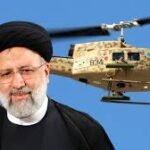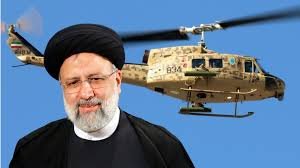The helicopter crash that took the lives of several high-ranking officials in Iran, including President Ebrahim Raisi, has left the nation in shock and mourning. Iran President Ebrahim Raisi’s helicoptor crash has not only shattered the lives of those directly affected but also sparked a whirlwind of speculation, theories, and questions about what truly happened on that fateful day.

As the initial grief gives way to a quest for answers, various theories have emerged, each as compelling as the next, reflecting the complex web of internal and external politics surrounding Iran. These theories range from a mere accident to intricate plots involving multiple actors with vested interests in Iran’s political landscape.
Theory 1: A Tragic Accident
The first and perhaps most straightforward theory is that the crash was a tragic accident. Helicopters, especially those used for official state purposes, are subject to rigorous maintenance schedules and piloted by highly trained individuals. Yet, accidents do happen. Mechanical failure, adverse weather conditions, or pilot error could easily lead to such a catastrophe. This theory is supported by initial reports suggesting poor visibility and technical issues with the helicopter moments before the crash. However, the skepticism rooted in Iran’s history of political turmoil and the high stakes involved makes this explanation seem too simplistic for many.
Theory 2: Internal Political Rivalries
Iran’s internal politics are notoriously complex, with various factions vying for power and influence. Some believe that President Ebrahim Raisi agenda had earned him powerful enemies within the conservative establishment. Could Iran President Ebrahim Raisi’s helicoptor crash be the result of a calculated move by hardliners within Iran to remove a political adversary? The timing of the incident, just as Ebrahim Raisi was gaining momentum in implementing his policies, lends credence to this theory.
Theory 3: Kurdish Insurgents
Iran has long grappled with Kurdish insurgency, particularly in the western provinces where Kurdish populations seek greater autonomy. The president’s helicopter was en route to a province with a significant Kurdish population, raising suspicions of insurgent involvement. Kurdish militant groups have both the motive and the capability to execute such an operation, aiming to destabilize the Iranian government and draw attention to their cause. Yet, no group has claimed responsibility, leaving this theory hanging in the realm of possibility without concrete evidence.
Theory 4: Western Powers and Israel
Given Iran’s contentious relationship with Western nations and Israel, some speculate that foreign intelligence agencies might be involved. The United States and its allies have consistently sought to curb Iran’s regional influence and nuclear ambitions. Israel, too, has a vested interest in the political dynamics of Iran, seeing Ebrahim Raisi;s potential for significant change as a threat to its strategic calculations. This theory suggests a covert operation designed to create chaos and instability, weakening Iran from within.
Theory 5: Sunni Militants
Iran’s predominantly Shia government has numerous adversaries among Sunni militant groups, who view Iran’s influence in the region with hostility. Groups like ISIS have targeted Iranian interests before, and a high-profile assassination via a helicopter crash would serve as a powerful symbolic strike. This theory posits that Sunni extremists, potentially backed by other regional Sunni powers, orchestrated the crash to strike a blow against the Shia-majority state.
Theory 6: Something Else Entirely
Beyond these theories lies the realm of the unknown. Could there be a more obscure reason for the crash, rooted in personal vendettas, undisclosed alliances, or shadowy elements within or outside Iran? The geopolitical landscape of the Middle East is a labyrinthine web of relationships and power plays, where truth is often stranger than fiction.
The Investigation: A Hope for Clarity
The Iranian government has launched a comprehensive investigation, promising transparency and a thorough examination of all possible causes behindIran President Ebrahim Raisi’s helicoptor crash . The international community watches closely, knowing that the findings could have far-reaching implications. Will the investigation unearth undeniable evidence pointing to one of these theories, or will it deepen the mystery, unable to provide a definitive answer?
As the investigation unfolds, the Iranian public and the world remain in suspense. The search for truth amidst the swirl of conjecture and speculation reflects the broader uncertainties and tensions that define Iran’s place on the global stage. Whether Iran President Ebrahim Raisi’s helicoptor crash was a tragic accident or a sinister plot, the quest for answers will shape Iran’s political future and its interactions with the rest of the world for years to come.





Leave a Reply